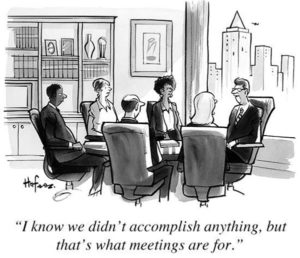Public companies looking to acquire your growing enterprise usually have a few financial  measures that help them weed out those candidates that will be too expensive in terms of effort or of too little financial attractiveness.
measures that help them weed out those candidates that will be too expensive in terms of effort or of too little financial attractiveness.
The first rule: 10/40:
One of my company CEOs recently described his rule for acquisition success, and it resonated with me as a great goal for planning during acquisition exercises. This CEO states that he has made it work twice when acquiring companies, and that is enough for him to make it his rule for all future acquisitions.
If the target company can show a ten percent EBITDA (earnings before interest, tax, depreciation and amortization), then the acquisition team should be able to create a way to make the resulting acquisition yield forty percent EBITDA after re–engineering the combined entity.
That’s quite a goal to achieve. But there are obvious and not–so obvious ways to make it happen, even if over time.
The second rule: The 20/20 rule
If you are experiencing 20% annual growth and 20% net profit before depreciation and tax, or any combination that adds to 40% (such as 10% profit and 30% growth), you are a prime target.
How to “sell” expense reduction and growth prospects
[Email readers, continue here…] Here are some of the checklist items your acquirer will consider. Dual layers of senior management remain only during the transition period and  transfer of institutional knowledge from acquired to acquirer. The best performers from the acquired become candidates to outrank or replace their counterparts, showing that a business combination is not all one–sided.
transfer of institutional knowledge from acquired to acquirer. The best performers from the acquired become candidates to outrank or replace their counterparts, showing that a business combination is not all one–sided.
Accounting and HR operations are combined as quickly as possible, as are customer service call centers, retaining specific product skills on the front line from the acquired company. R&D efforts may remain separate for a period or forever, but R&D management is consolidated as soon as possible to avoid territorial disputes and retention of inefficient development processes.
Sales organizations may or may not be combined, but senior sales management is consolidated so that commissioning, territorial management and product management functions all harmonize.
Facilities may become redundant or oversized after these efforts, allowing for consolidation of facilities as well.
If we follow the reasoning of our CEO who proposed the rule, we can drop an additional 30% of the net revenues (after cost of sales) from the acquired company to the bottom line. Not a bad goal, and certainly not a bad result.

 change. Authors Jeanne Liedtka and Tim Oglivie have created a framework for creation of a new product or service – one worth spending at least a cycle of time for review. From their book, “Designing for Growth,” they iterate a four-question matrix, each with steps for creation through launch. We’ll use this loosely to frame our process.
change. Authors Jeanne Liedtka and Tim Oglivie have created a framework for creation of a new product or service – one worth spending at least a cycle of time for review. From their book, “Designing for Growth,” they iterate a four-question matrix, each with steps for creation through launch. We’ll use this loosely to frame our process. The Stanford Design School teaches ideation as a five-step process, fitting nicely into the four questions above.
The Stanford Design School teaches ideation as a five-step process, fitting nicely into the four questions above. first, let’s examine the three kinds of loyalty you don’t want to engender…
first, let’s examine the three kinds of loyalty you don’t want to engender… We engage the customer at the time and place most appealing to that person. We under–promise and over–deliver – every time. We react positively to suggestions, reward their loyalty with recognition, and make this important cohort not just seem to be, but actually be the ideal example of our mission personified.
We engage the customer at the time and place most appealing to that person. We under–promise and over–deliver – every time. We react positively to suggestions, reward their loyalty with recognition, and make this important cohort not just seem to be, but actually be the ideal example of our mission personified. in keeping up with trends. It is natural for executives and entrepreneurs with lots on their plate and little extra time – to just keep up the same activities that have made the company a success.
in keeping up with trends. It is natural for executives and entrepreneurs with lots on their plate and little extra time – to just keep up the same activities that have made the company a success. The industry takes notice when you change up the same old marketing methods and message. A company that uses the best and enhances or replaces the rest will be noticed and rewarded with increased revenues.
The industry takes notice when you change up the same old marketing methods and message. A company that uses the best and enhances or replaces the rest will be noticed and rewarded with increased revenues. team. She holds a weekly meeting of her direct reports and asks them to find three important but actionable items for the group to work on if not complete during the following week. This works for live meetings or those using video team meetings.
team. She holds a weekly meeting of her direct reports and asks them to find three important but actionable items for the group to work on if not complete during the following week. This works for live meetings or those using video team meetings.
 had a great lesson for all of us. He had asked his arborist if he could move a mature tree from one part of his property to another – to make room for an addition to his home. “Yes,” replied the professional. “And how much would it cost?” To which the arborist responded, “We’d charge $18,000 for that.”
had a great lesson for all of us. He had asked his arborist if he could move a mature tree from one part of his property to another – to make room for an addition to his home. “Yes,” replied the professional. “And how much would it cost?” To which the arborist responded, “We’d charge $18,000 for that.” that asking the right questions may be more important than having the right amount of knowledge. Our friend could have been an architect attempting to protect the look of the homeowner’s property or view from a window. He would have known the positive visual effect of relocating that tree would have created. But he might never have known the consequence of that knowledge if never asking the critical question about the life of the tree.
that asking the right questions may be more important than having the right amount of knowledge. Our friend could have been an architect attempting to protect the look of the homeowner’s property or view from a window. He would have known the positive visual effect of relocating that tree would have created. But he might never have known the consequence of that knowledge if never asking the critical question about the life of the tree. one of the largest companies in the technology world. Everyone, including those connected with the newly acquired dominant player, wondered what changes would affect their company and their personal lives and fortunes. Well, even though that acquisition is still playing itself out on the field of battle, it appears quite clear that the new parent has directed its new subsidiary to abandon the lower end of the market and focus upon the larger sales, corporate customers, and major brands.
one of the largest companies in the technology world. Everyone, including those connected with the newly acquired dominant player, wondered what changes would affect their company and their personal lives and fortunes. Well, even though that acquisition is still playing itself out on the field of battle, it appears quite clear that the new parent has directed its new subsidiary to abandon the lower end of the market and focus upon the larger sales, corporate customers, and major brands.
 happened in the past? I know. We need financial data for comparison, and to a degree – for planning. But we should be thinking of finding ways to make data available to us much earlier when it would be more meaningful and actionable.
happened in the past? I know. We need financial data for comparison, and to a degree – for planning. But we should be thinking of finding ways to make data available to us much earlier when it would be more meaningful and actionable. So that should become a departmental or corporate goal for you. Find places where reporting can be made by exception, not routine. Call center getting behind? Production slowed or stopped? Sales slipping unexpectedly? Why wait until the damage is done?
So that should become a departmental or corporate goal for you. Find places where reporting can be made by exception, not routine. Call center getting behind? Production slowed or stopped? Sales slipping unexpectedly? Why wait until the damage is done?
 Hardeners of the arteries of progress. Most devolve into a series of reports from each constituency, spewing facts that could have been printed and passed to the board ahead of time. Board meetings should revolve around issues, not progress. Reviewing sales account by account is not an effective use of a board’s collective time. Attacking critical issues after providing background information and perhaps a list of alternatives is a good use of board time.
Hardeners of the arteries of progress. Most devolve into a series of reports from each constituency, spewing facts that could have been printed and passed to the board ahead of time. Board meetings should revolve around issues, not progress. Reviewing sales account by account is not an effective use of a board’s collective time. Attacking critical issues after providing background information and perhaps a list of alternatives is a good use of board time.